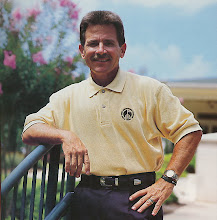The original ACC location was a gently rolling Perry Maxwell design just south of Austin. The new club is located in the hills just west of Austin. To give you an idea of the difficulty of the course, member handicaps initially increased by almost 50% and an average of 6 hour rounds of play. A tough track indeed.
The 11th hole has a 220 to 230 yard carry over the canyon
The 18th hole has very difficult approach shot into the green from 200 yards out at the top of the hill
The 12th hole has a long & difficult approach carry to a very narrow green
#2 Par 3 Requires a total carry
Hole #3 - A 250 yard approach into a green with water 4 feet left of the green
The 11th hole commands a long approach shot into the with a 60 foot deep canyon 6 feet left of the green
Ben Crenshaw & Tom Kite are members of ACC
I had the tremendous good fortune of working with Teacher of the Century Harvey Penick














